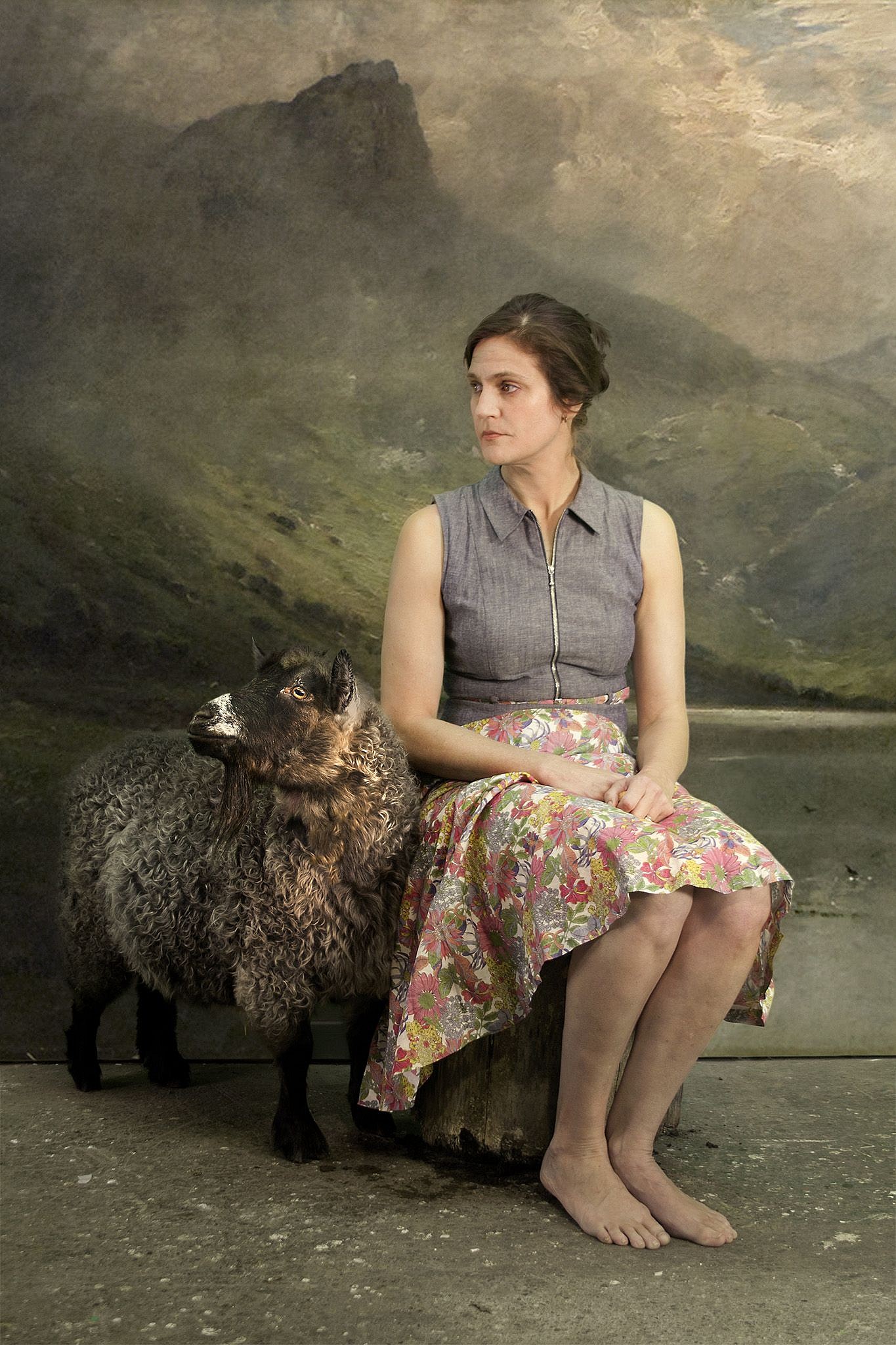
Mark Alice Durant: The work references the history of portraiture in general but specifically, portraiture in photography especially in the 19th century when elaborate backdrops were employed as a way of connecting photography in painting through references to the picturesque.
Oliver Wasow: On the simplest level it is just a mash-up of photographic and painterly tropes that have been used in studio photography for 150+ years, from 19th century carte-de-visite all the way up to the backdrops my kids choose for their school portraits. In most of those carte-de-visite images, the photographer did not make much of an effort to hide the painting; you can see the point where the painting meets the floor. I love that, there is something so sweet about the way the painting gathers, or pools behind the person. Like they were softening up the cold hard photography studio by placing the subject in a landscape.
MAD: So many things are going on where the painting meets the floor, between two and three dimensions, between photographic and painterly traditions, where different kinds of illusion meet. If you took a purely conceptual approach to making images that would be enough, I think I would even like it. I appreciate that is only one aspect of the work; it is essential, braided into the overall meaning of the work, but not the reason for embarking on such a project. You are making earnest images of people you are close to; they are anchored through an emotional connection, yet exist in a kind of fantasy space or constructed space. There is a lot going on yet they are relatively straightforward images. They are smart yet understated.
-- From an interview with Mark Alice Durant, published in his photography blog St. Lucy